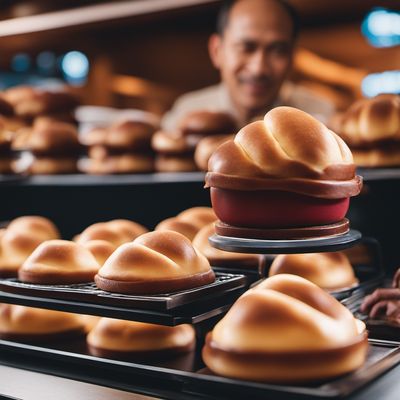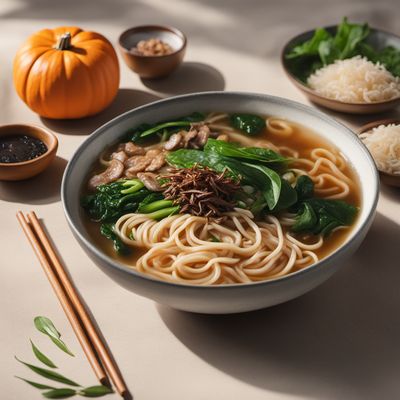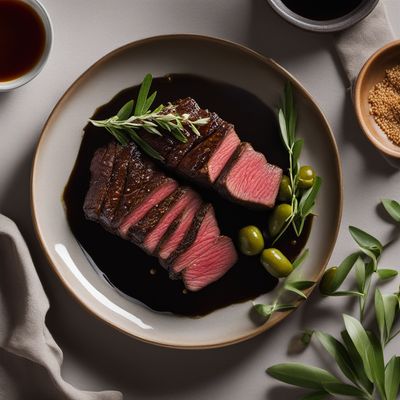
Recipe
Chilled Buckwheat Noodles with Dipping Sauce
Refreshing Summer Delight: Chilled Buckwheat Noodles with Dipping Sauce
4.7 out of 5
Zaru soba is a traditional Japanese dish that consists of chilled buckwheat noodles served with a flavorful dipping sauce. It is a popular choice during the hot summer months in Japan due to its refreshing and light nature.
Metadata
Preparation time
15 minutes
Cooking time
5 minutes
Total time
20 minutes
Yields
4 servings
Preparation difficulty
Easy
Suitable for
Vegetarian, Vegan, Gluten-free, Dairy-free, Low-fat
Allergens
Soy (in the soy sauce), Gluten (in the buckwheat noodles)
Not suitable for
Paleo, Keto, High-protein, Low-carb, Nut-free
Ingredients
-
200g (7 oz) buckwheat noodles 200g (7 oz) buckwheat noodles
-
4 cups (950ml) water 4 cups (950ml) water
-
1/4 cup (60ml) soy sauce 1/4 cup (60ml) soy sauce
-
1/4 cup (60ml) mirin 1/4 cup (60ml) mirin
-
2 cups (470ml) dashi stock 2 cups (470ml) dashi stock
-
1 tablespoon sugar 1 tablespoon sugar
-
Optional toppings: grated daikon radish, sliced green onions, wasabi, nori seaweed strips, sesame seeds Optional toppings: grated daikon radish, sliced green onions, wasabi, nori seaweed strips, sesame seeds
Nutrition
- Calories (kcal / KJ): 250 kcal / 1046 KJ
- Fat (total, saturated): 1g, 0g
- Carbohydrates (total, sugars): 54g, 8g
- Protein: 8g
- Fiber: 4g
- Salt: 3g
Preparation
-
1.Bring water to a boil in a large pot.
-
2.Add the buckwheat noodles and cook according to the package instructions until al dente.
-
3.Drain the noodles and rinse them under cold water to remove excess starch.
-
4.Place the noodles on a bamboo mat or a colander to drain any remaining water.
-
5.In a small saucepan, combine soy sauce, mirin, dashi stock, and sugar. Bring to a simmer over medium heat and cook for 2-3 minutes.
-
6.Remove the dipping sauce from heat and let it cool to room temperature.
-
7.Divide the dipping sauce into individual serving bowls.
-
8.Serve the chilled noodles on a plate or bamboo mat, alongside the dipping sauce.
-
9.Garnish with grated daikon radish, sliced green onions, wasabi, nori seaweed strips, or sesame seeds, if desired.
-
10.Dip the noodles into the sauce and enjoy!
Treat your ingredients with care...
- Buckwheat noodles — Be careful not to overcook the noodles as they can become mushy. Rinse them under cold water immediately after cooking to stop the cooking process and cool them down.
Tips & Tricks
- For added flavor, consider adding a splash of rice vinegar or a pinch of grated ginger to the dipping sauce.
- To enhance the presentation, serve the noodles on individual bamboo plates or bowls.
- If you prefer a spicier dipping sauce, add a small amount of chili oil or chili flakes.
- Experiment with different toppings such as tempura flakes or sesame oil for a unique twist.
- If you can't find dashi stock, you can substitute it with vegetable broth or water, although the flavor will be slightly different.
Serving advice
Serve zaru soba as a main course or as part of a Japanese-style meal. It is best enjoyed chilled, especially during hot summer days. Accompany it with a side of pickled vegetables or a fresh salad for a well-rounded meal.
Presentation advice
Arrange the chilled noodles neatly on the plate or bamboo mat, allowing them to drape naturally. Place the dipping sauce bowls alongside the noodles and garnish with vibrant toppings such as grated daikon radish, green onions, and nori seaweed strips. The contrasting colors and textures will make the dish visually appealing.
More recipes...
More Japanese cuisine dishes » Browse all

Yaki-udon
Yaki-udon is a Japanese stir-fried noodle dish that is typically made with thick udon noodles, vegetables, and meat or seafood. It is a popular...

Tonkotsu ramen
Pork Bone Ramen Noodle Soup
Tonkotsu ramen is a Japanese noodle soup dish that is made with a rich and creamy pork-based broth. It is a hearty and satisfying dish that is...

Anpan
Anpan is a Japanese pastry that is made with sweet bread and filled with red bean paste. It is a popular snack that is enjoyed all over Japan.






